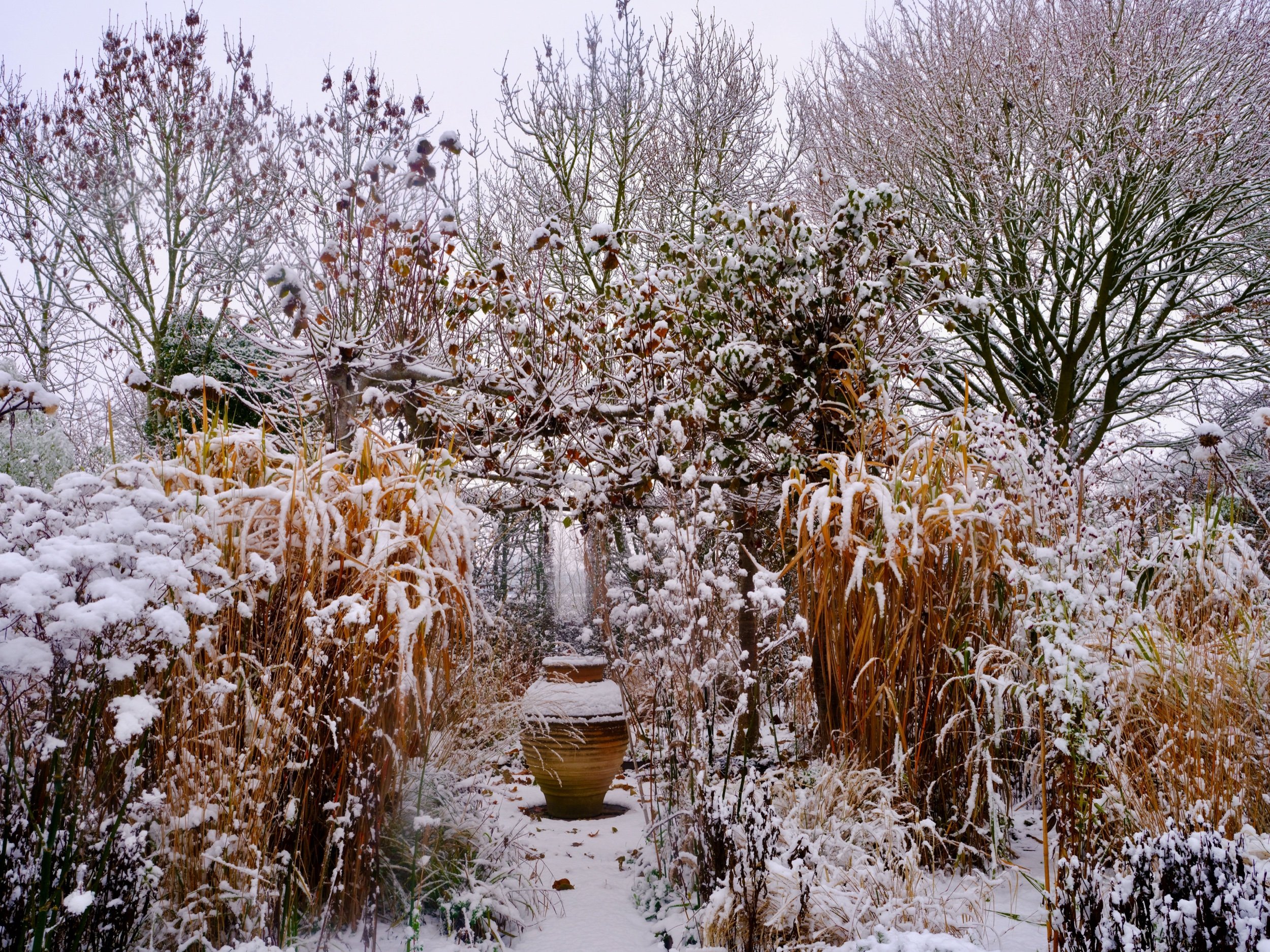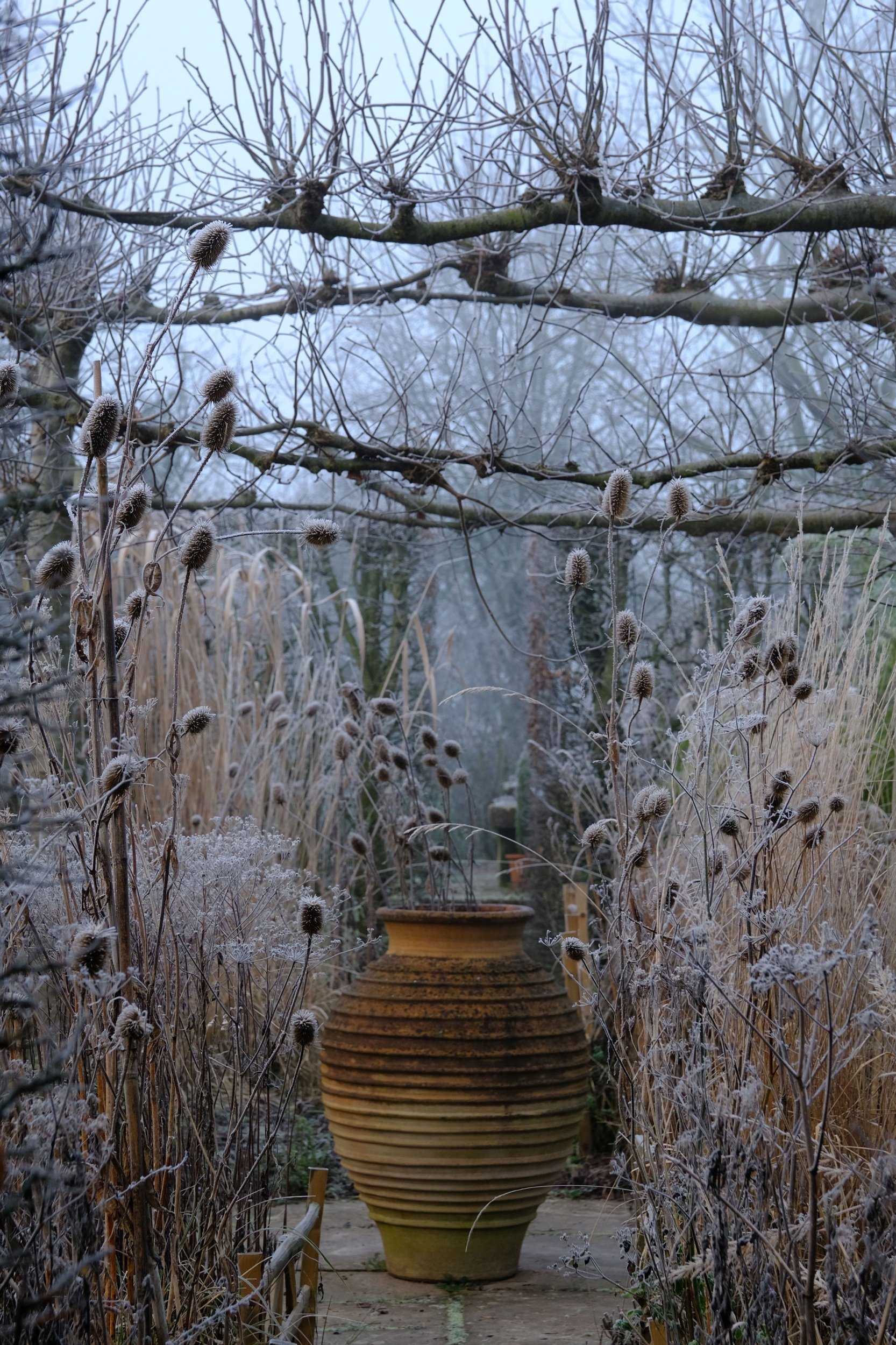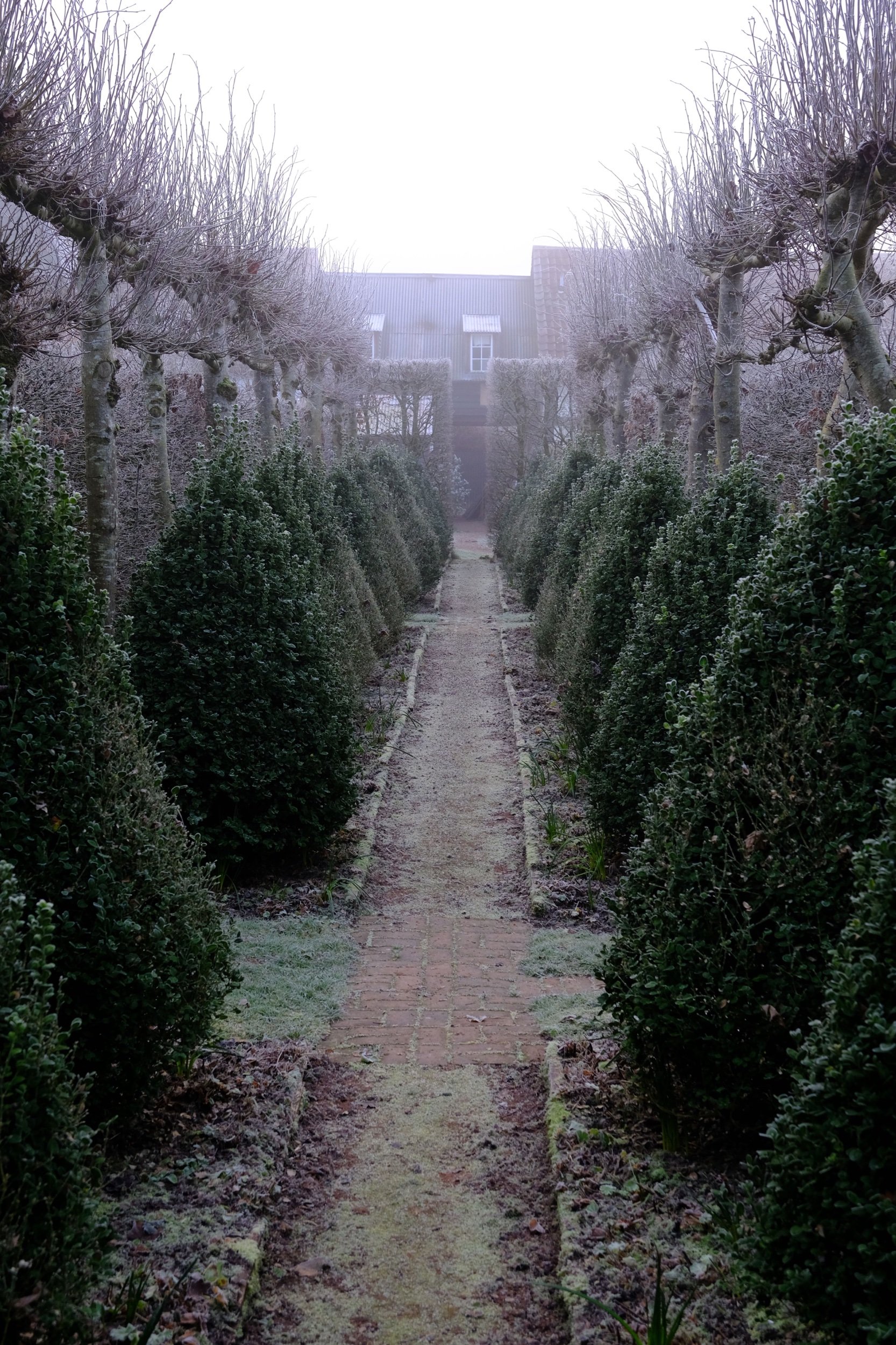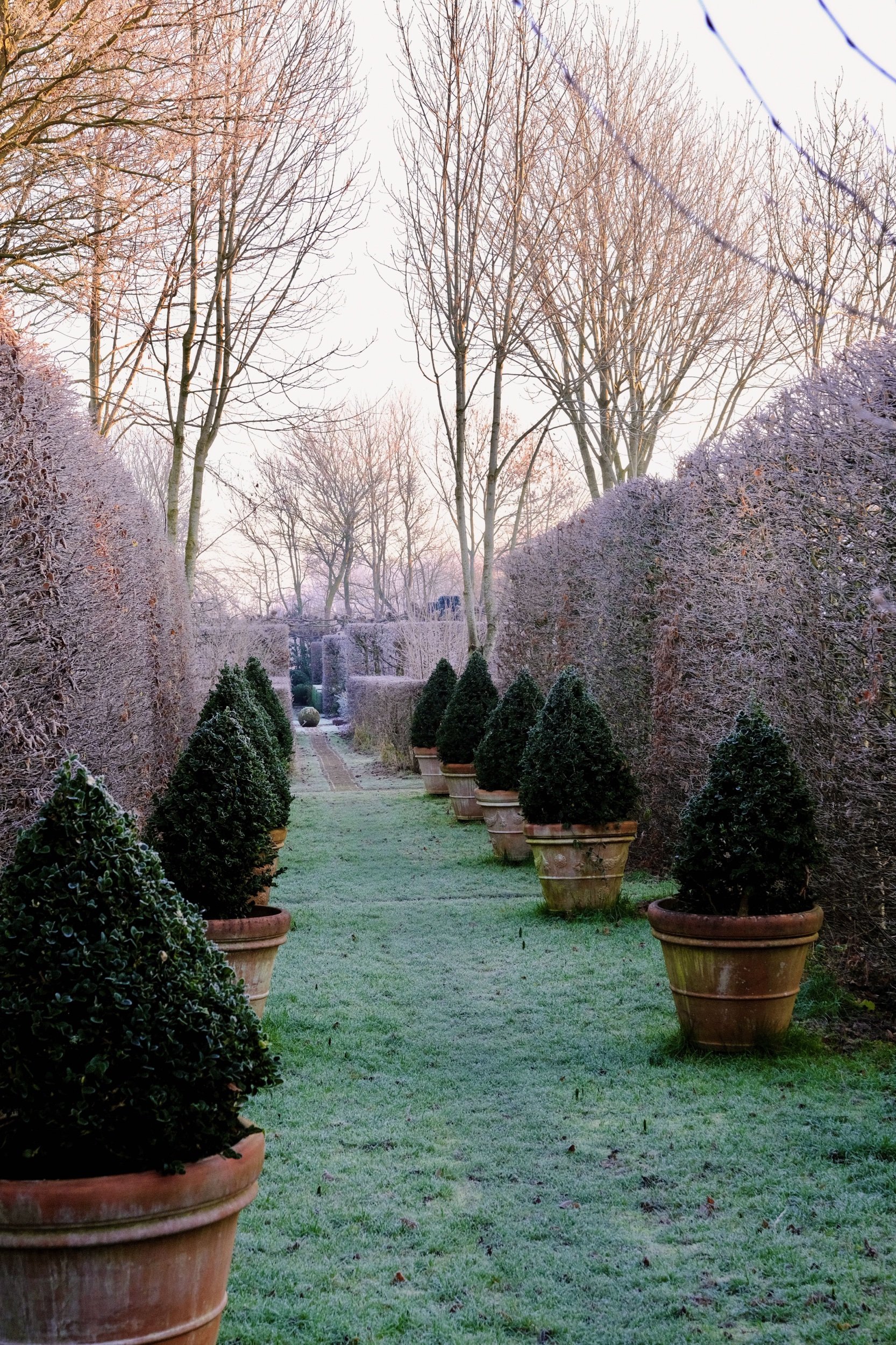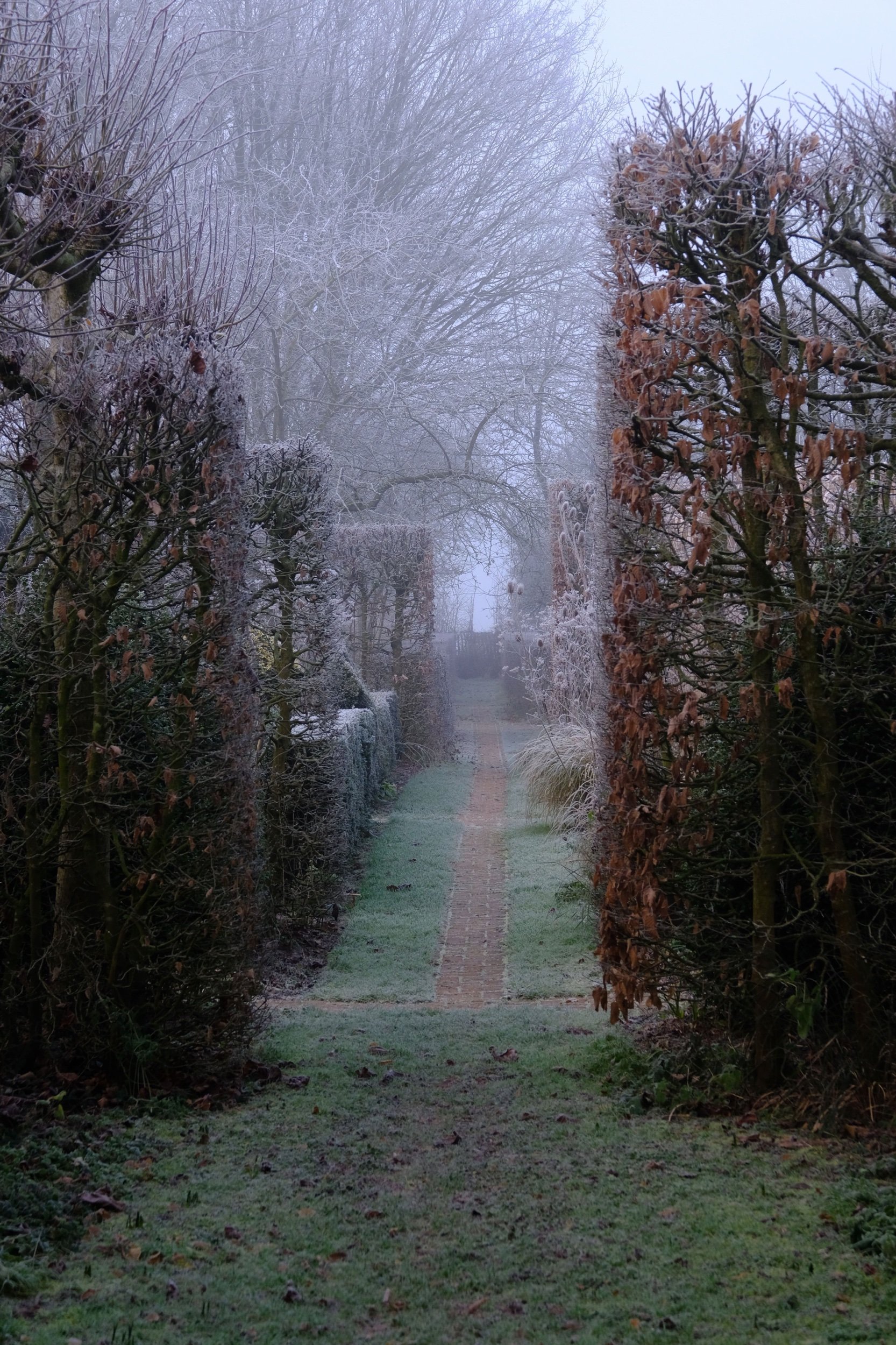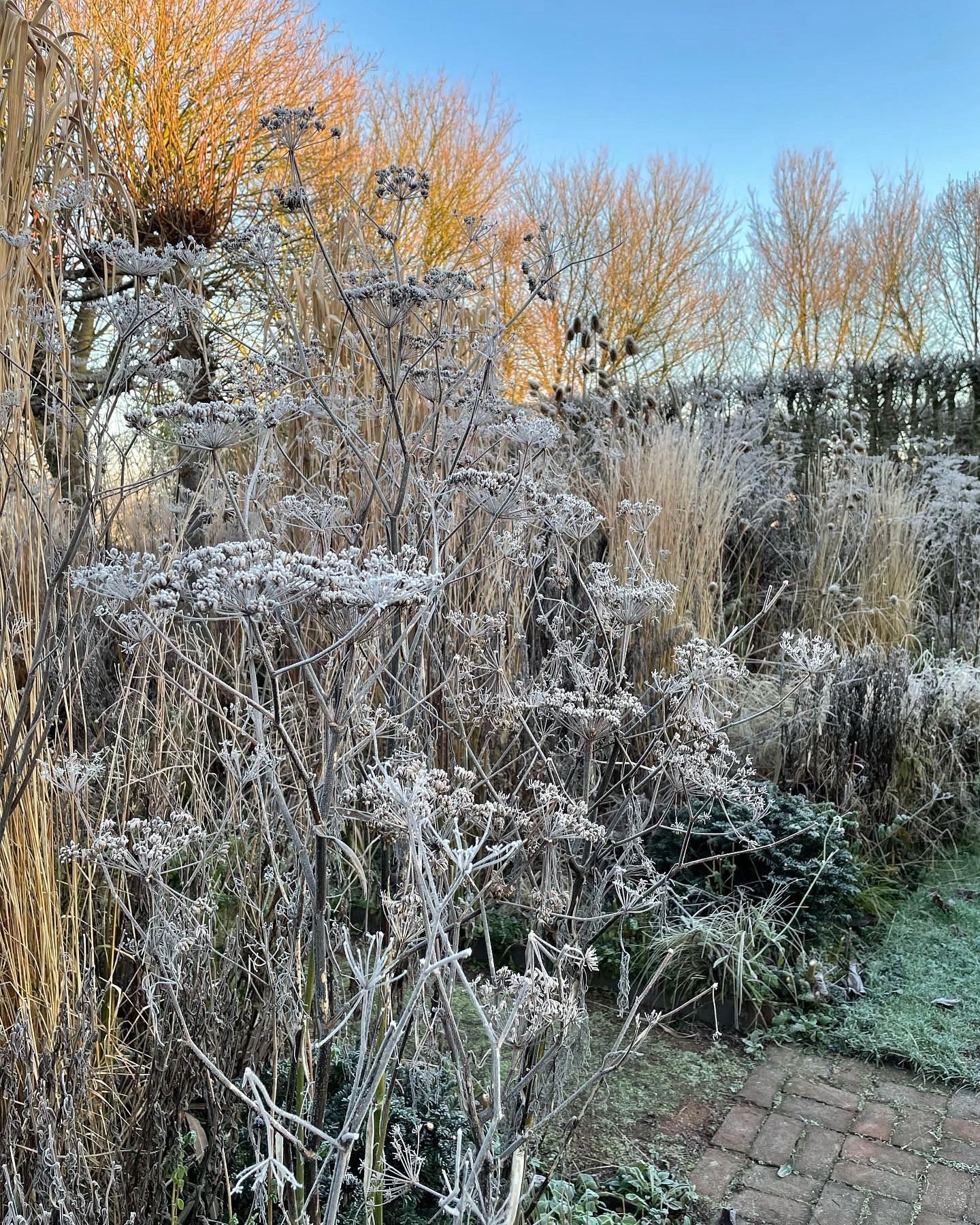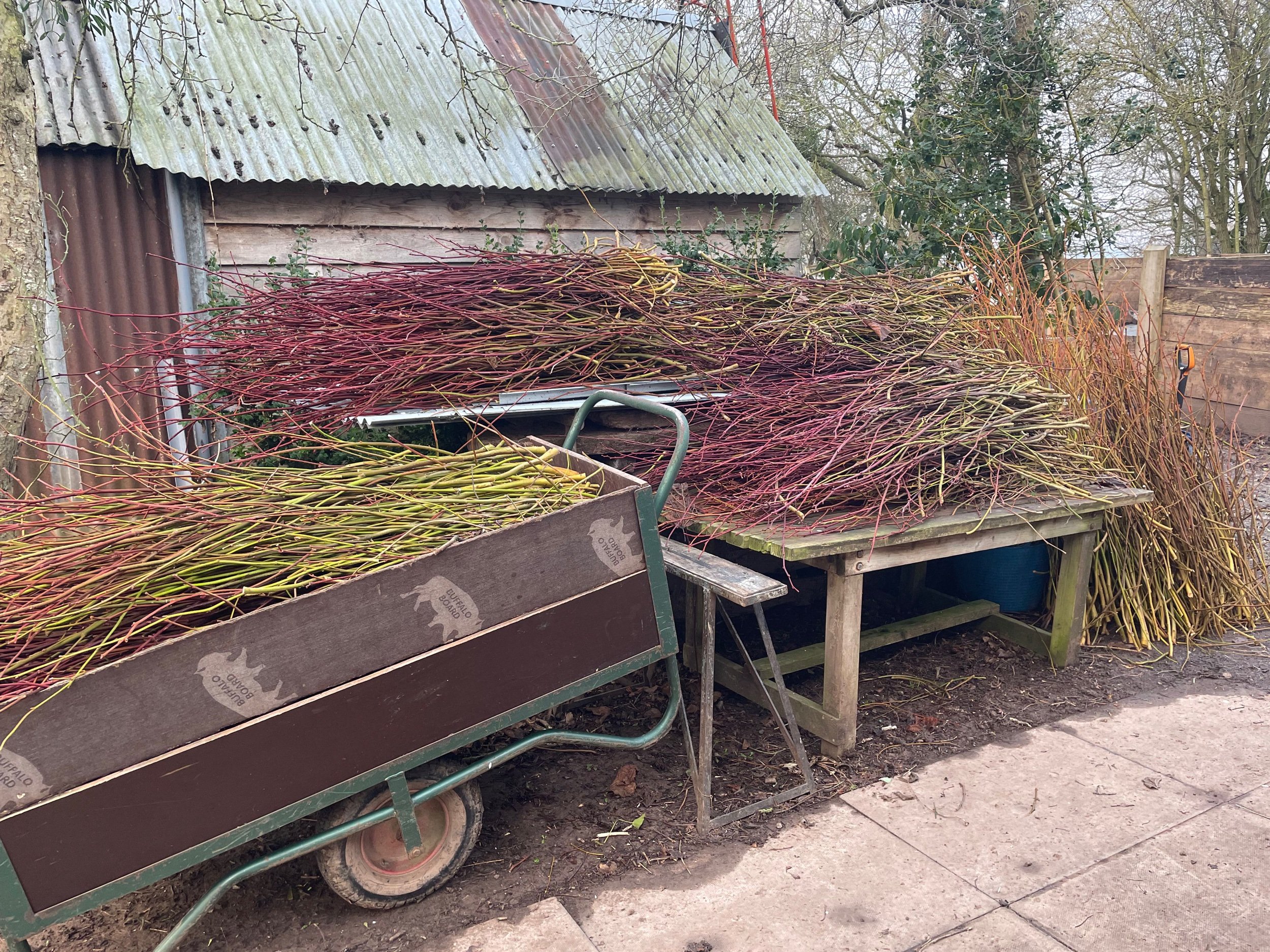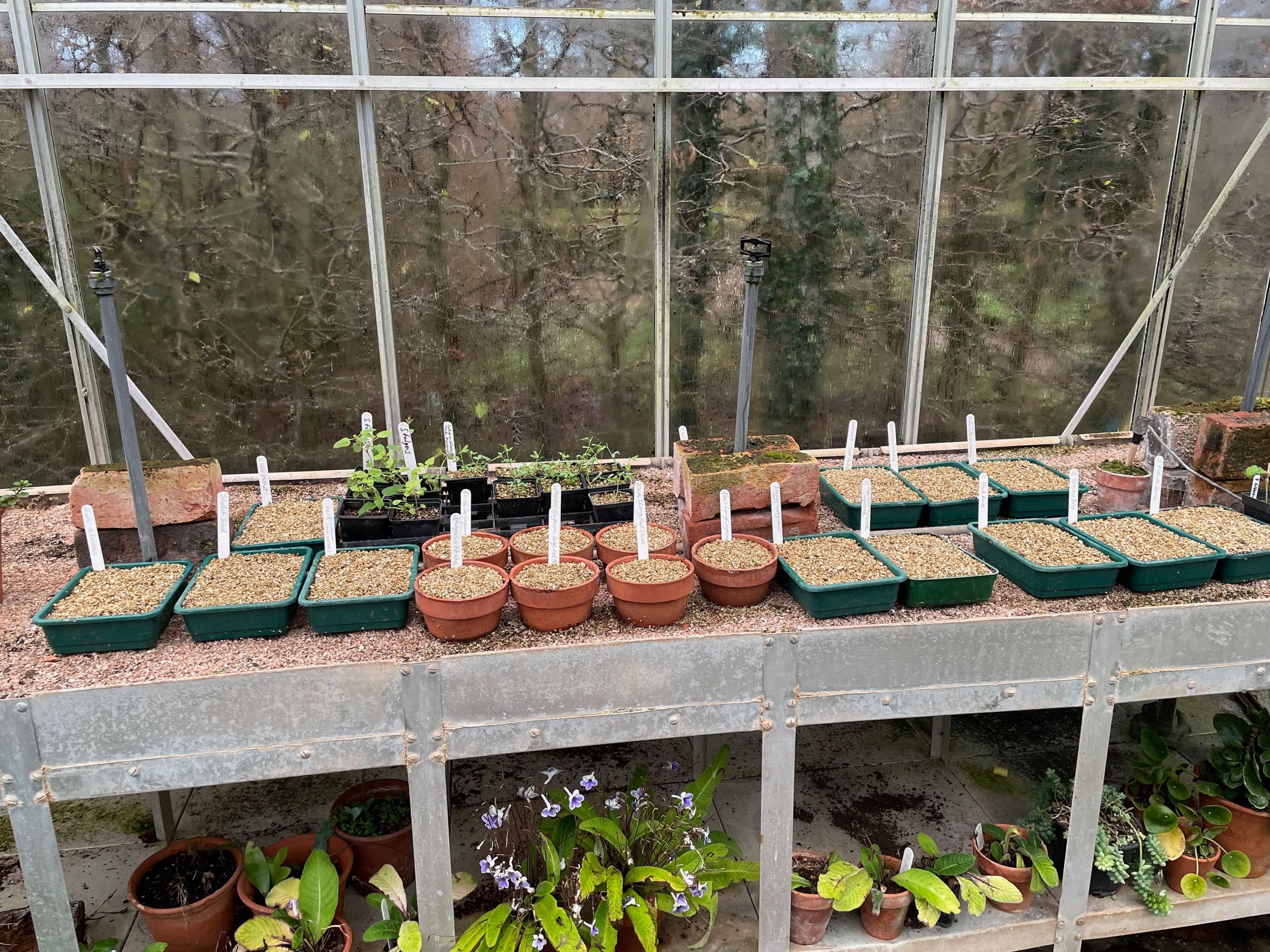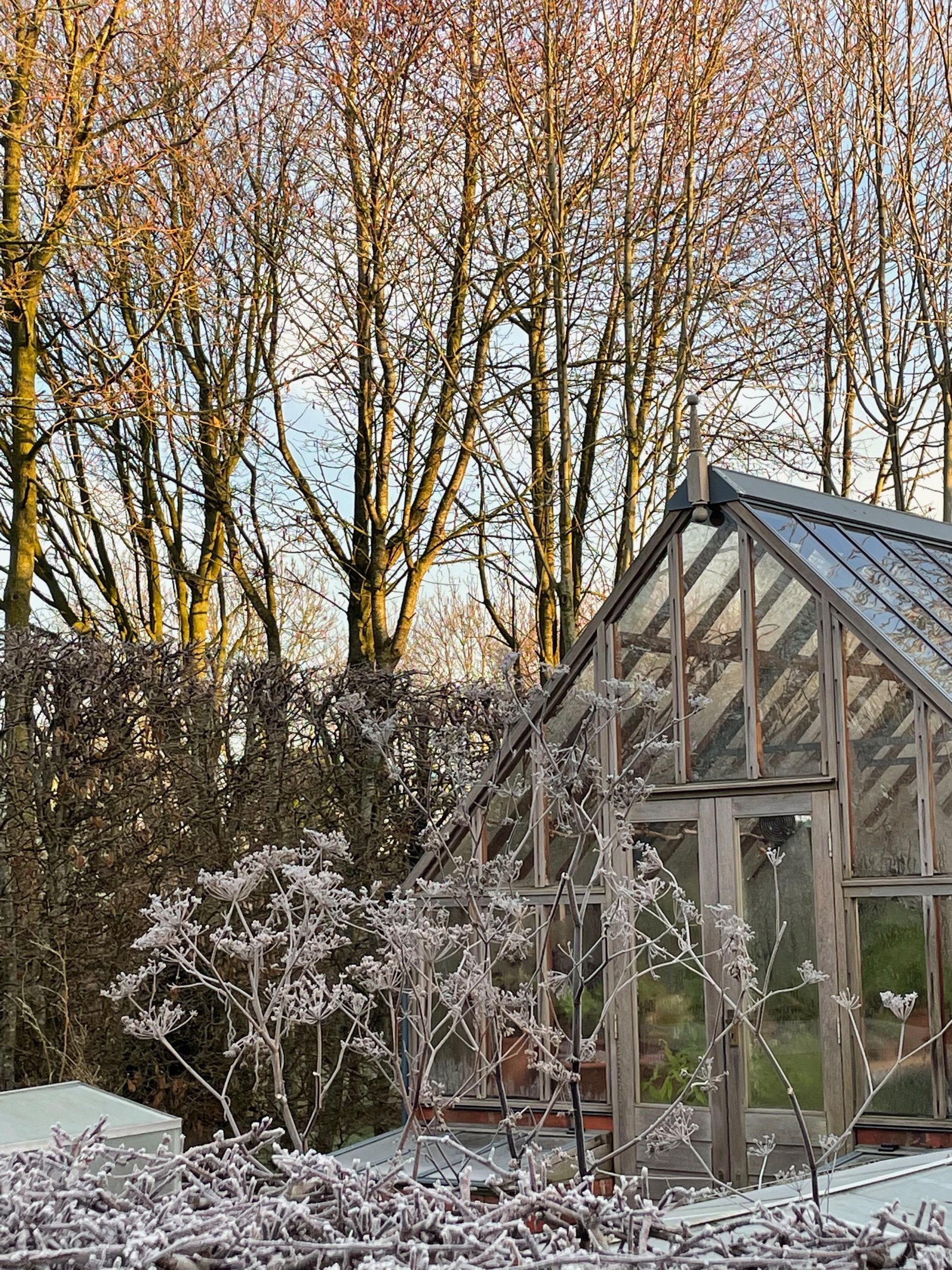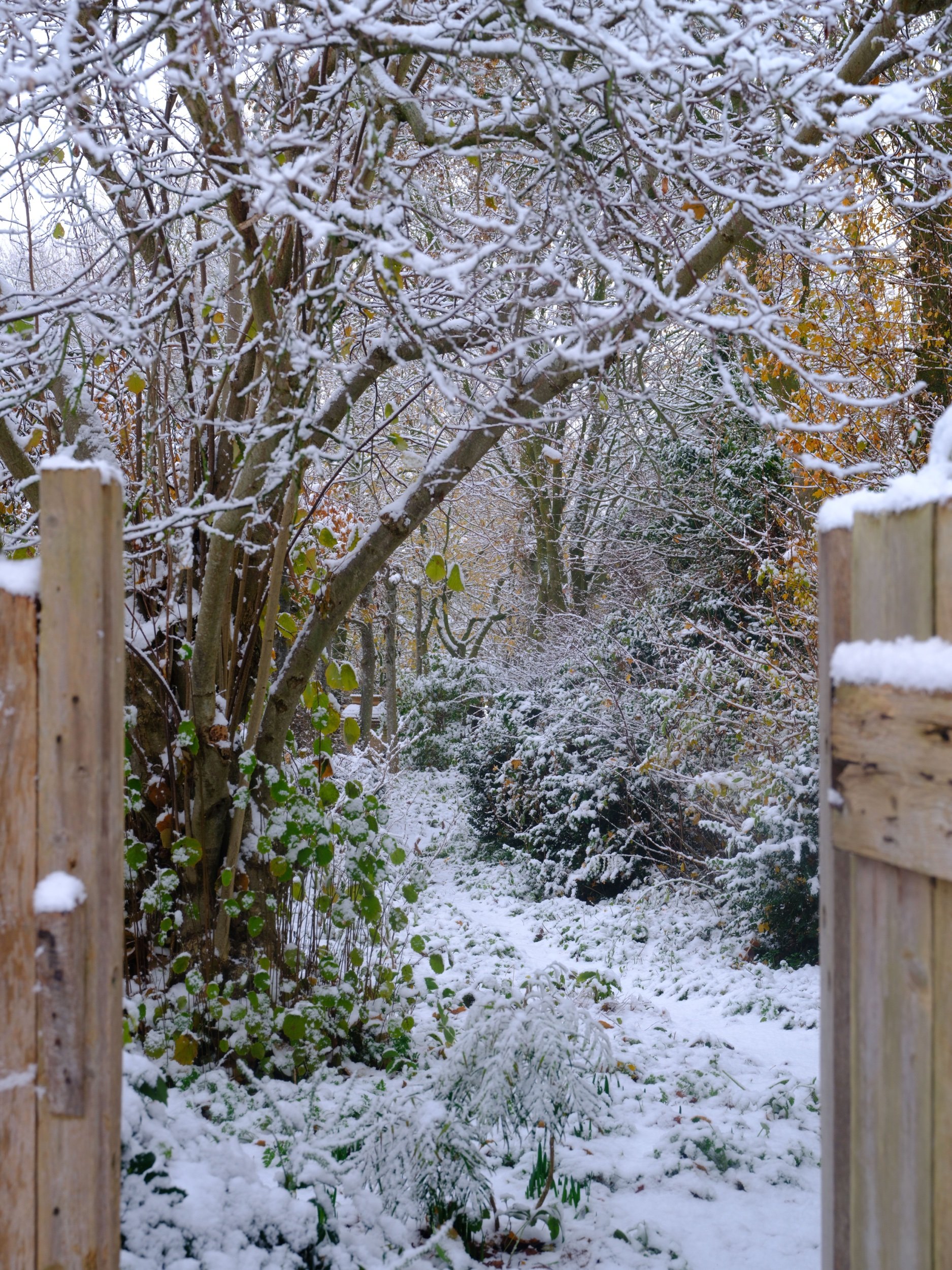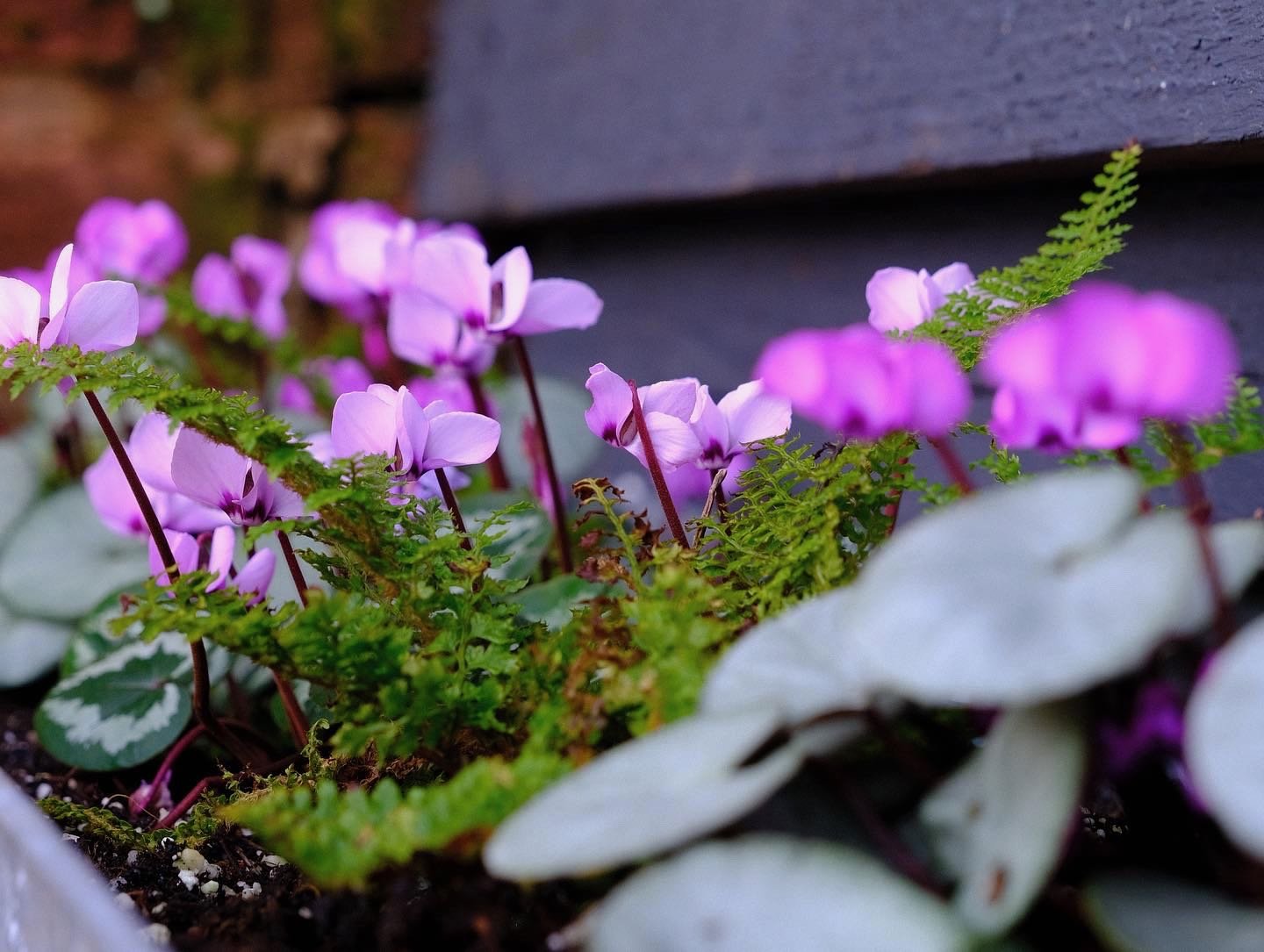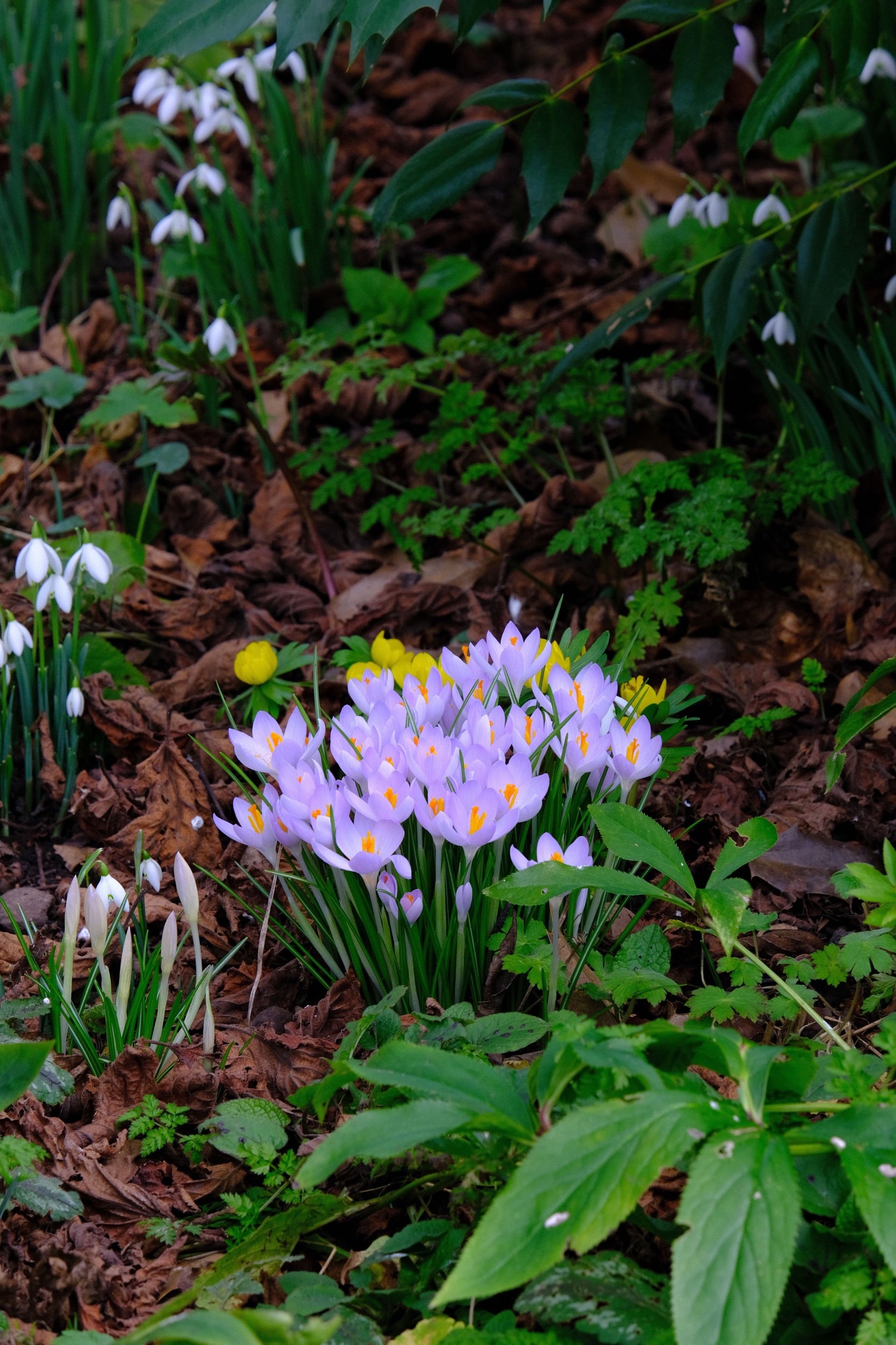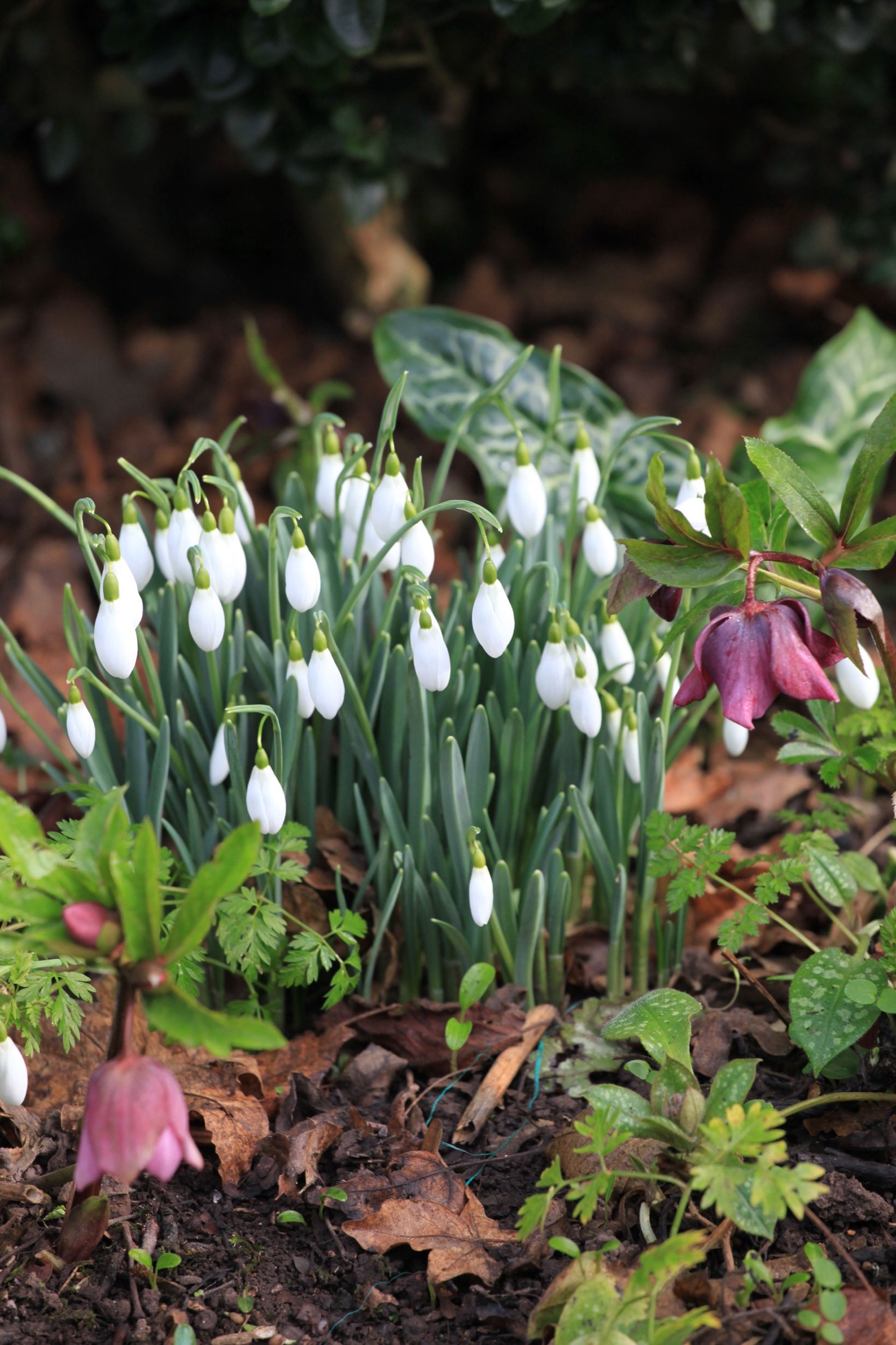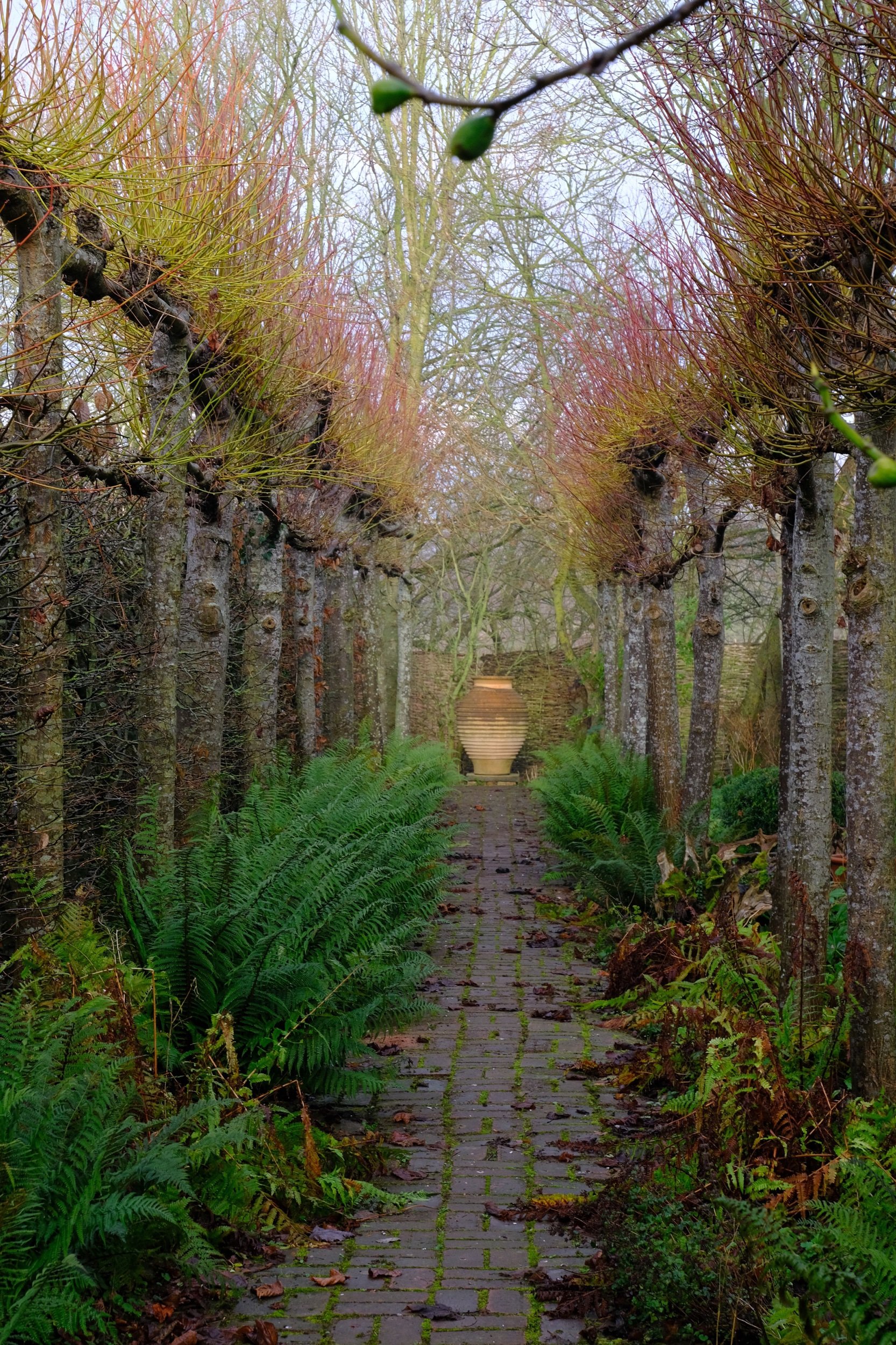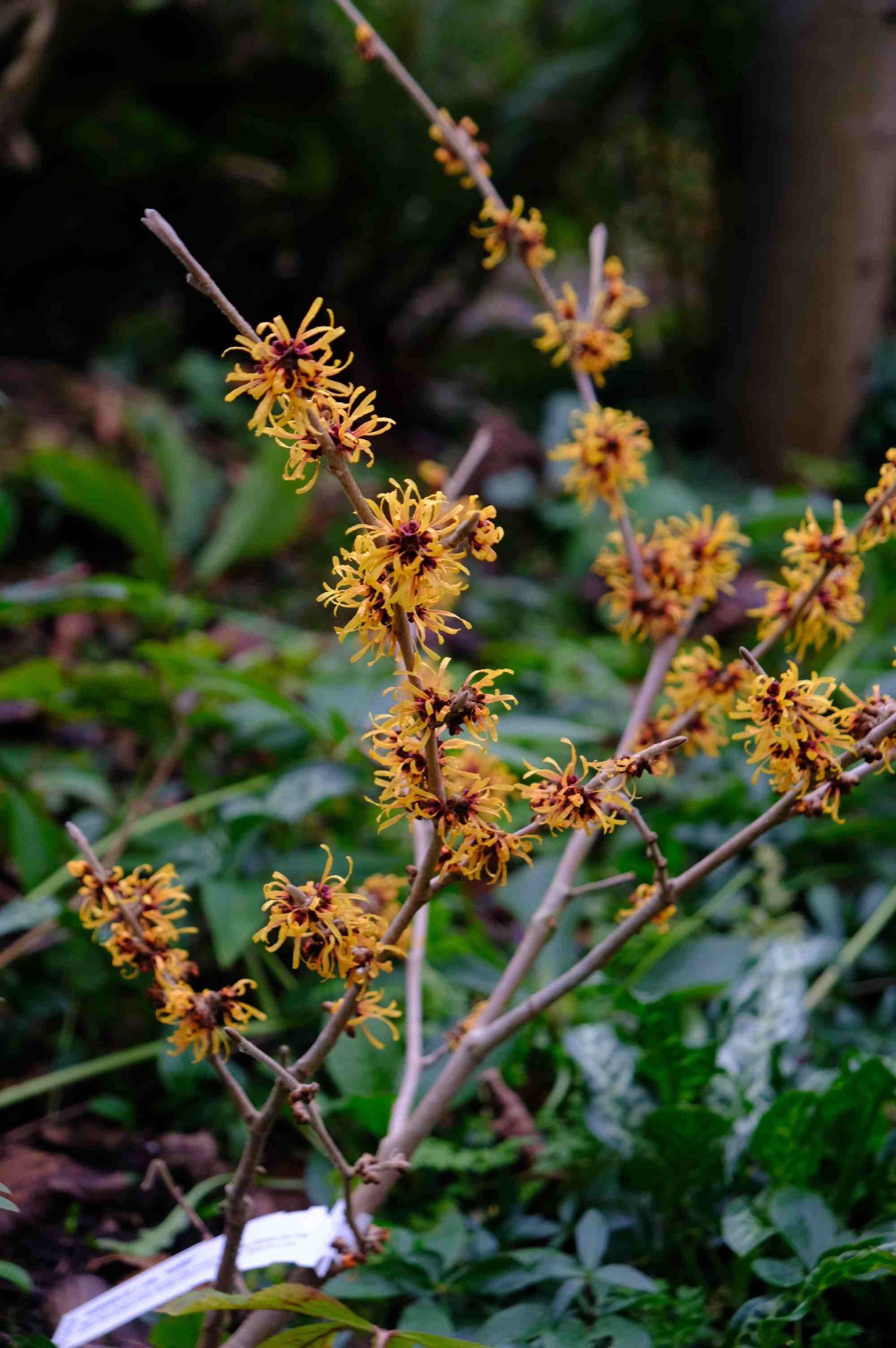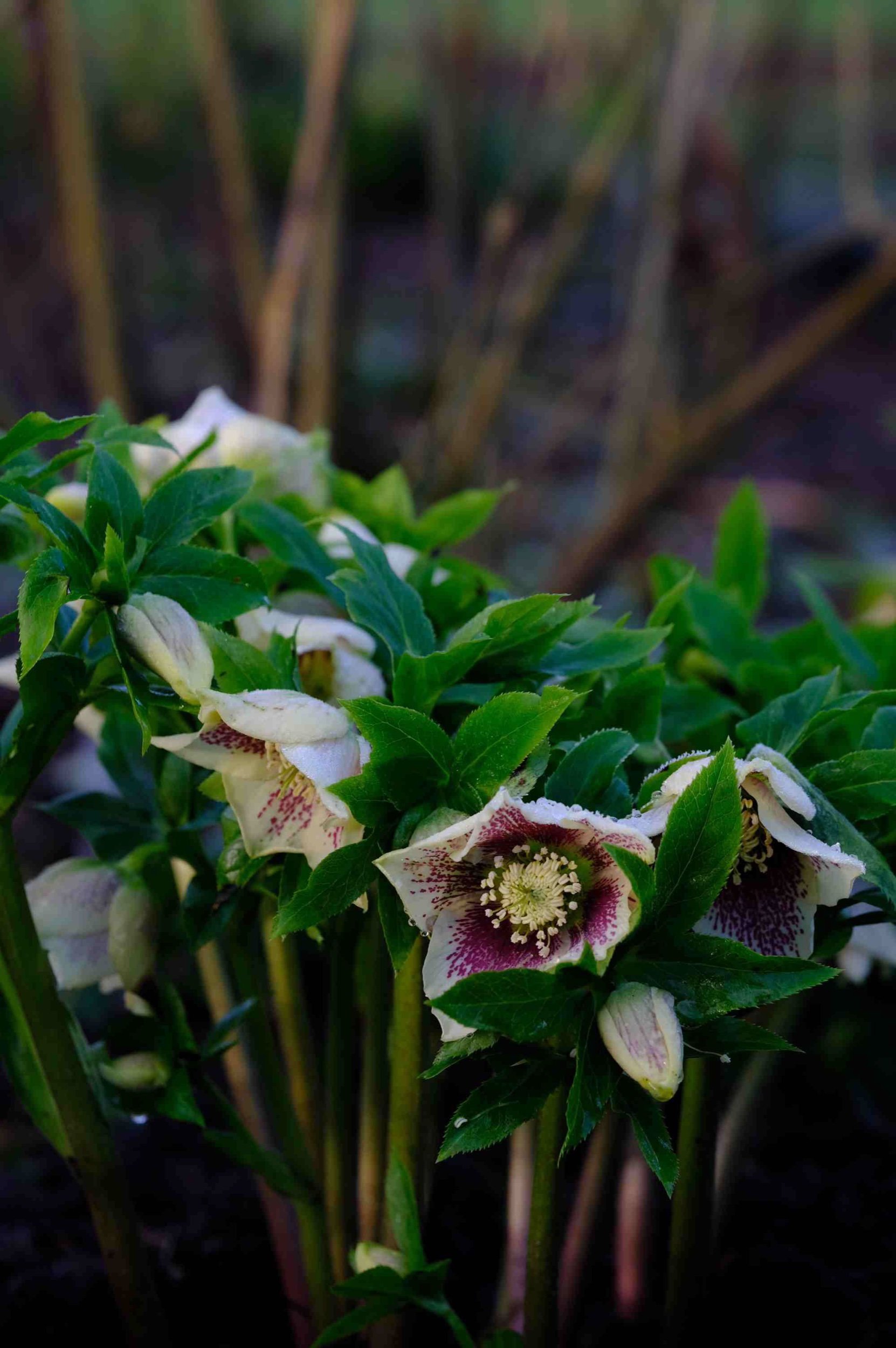January 2023
2023 has opened wet and mild for us here in this garden on the borders of England and Wales although we had a snap of really cold weather just before Christmas with the temperature dropping to minus 13 (8F) for a few days. This, followed by days of rain, has left the garden ragged and strewn with limp foliage. Hopefully, despite the above-ground carnage, not too much has actually been killed. But Spring will reveal the extent of the damage.
However, whereas up until Christmas Spring is another land whose shores we can dream of but not see, from January, on a clear day Spring is believable and almost visible - a shimmer on the horizon. There will be a lot of rough weather to come and the days are still pitifully short, but they are lengthening and the birdsong is just beginning and the garden is flexing its muscles and starting to awaken.
As I write this there are no snowdrops open nor any sign of crocus or early Iris but all experience shows that by the end of the month all these will be hitting their stride.
There is a sense of purpose and even urgency to get jobs done. We try, weather permitting, to mulch, prune, and plant whenever conditions allow and if they do not then there are seeds to be sown as well as pots to be washed and labels to be scrubbed so they can be recycled. As well as these regular horticultural tasks we also try and get bigger, one-off jobs tackled like laying paths or putting in new stand pipes. I want to make a new fruit cage, increase the vegetable area and clear back overhanging branches in the Damp garden. The more of this I can get done in January, the better.
The year ahead will be a busy one for me over and above the demands of the garden. A new series of Gardeners World begins in early March, I am making a series about Spanish Gardens and another one about British Gardens. I have a big book project that I have been working on for a year to complete as well as flower shows, talks and articles.
But all roads an all projects begin and end here in this garden where I am rooted deep in the loamy soil. Everything else is an embellishment.
I wish you a very happy and healthy 2023 for you and your loved ones.
January Jobs
It is not too late to plant tulips - but you really do need to get on with it. Tulips planted now might flower a little later than those planted in November but they will make a perfectly good display. If intending to leave them in the ground plant as deeply as you can - at least 4 inches. But if you just want a good show this year they can be popped an inch or two in the topsoil and will be fine for this spring. When planting in a container make sure that they have good drainage because although they are completely hardy to cold, the biggest enemy is rotting in damp soil. But this is a job to do by the middle of the month at the latest.
The Vegetable Garden
The spring salad crops are sown in the first week of January. I always use organic seed where possible. These will include Rocket, Mizuna, Little Gem and Tom Thumb lettuce and curly endive. This feels like a positive, creative way to start the year. It might be hard frost outside but I sow these into seed trays or plugs using peat-free compost and put them to germinate on a heated mat in the greenhouse.
None of these plants will ever go outside but will be planted into soil in the big greenhouse at the beginning of February and harvested from Mid march through to Mid may when they will be cleared to make room for tomatoes, peppers, basil and aubergines.
If you do not have a greenhouse or tunnel then wait a while before sowing seed. I have learnt the painful way that being too soon with seed sowing is usually more likely to lead to problems than being too late.
Seeds or plants put into cold ground will not germinate or grow and even if they do, can often remain static for weeks, especially in an exposed garden, during which time they are prey to any hungry slug, mouse or bird. A healthy plant will always catch up if put in a little late, which is why at the beginning of the year I put most of my energies into raising really strong seedlings under cover, hardening them off slowly, so that each one is thoroughly ready. This is certainly the best way to deal with most pests and diseases.
And while I am busily building up stocks of indoor seedlings ready for spring, Snowdrops, aconites, hellebores, catkins and most gloriously of all, the early irises are all coming into flower. The garden is coming alive again - and so am I.
Winter Pruning of Fruit Trees
This is always my big January job and if nothing else this is something I like to have finished by the end of the month.
Try to understand how something grows before pruning. Does it flower on new or old wood? Does it grow new shoots in a great post flowering burst or do they steadily emerge over the season? Does a fruit tree need to achieve a certain maturity to create spurs that bear fruit or will they be produced in the first year of growth? Does the plant heal well or is it , like cherries and plums, a bleeder - and if so when does it produce least sap? If in doubt about any of this - don’t cut. Wait. You will never do harm by not pruning and patience in a garden is a great virtue.
if you prune an apple tree hard each winter it will make a mass of new growth but no flowers – and therefore no fruit. This cycle is often perpetuated by even harder pruning the following year – to get rid of all that new, fruitless growth, which, having lots of lovely succulent sap, will attract aphids and fungal disease. So through over-zealous and mistimed pruning people often ruin their fruit trees.
If you wish to curtail growth you leave the pruning to summer - July is ideal - when the foliage is fully grown and before the roots start to store food for winter. Do not prune plums, apricots, peaches or cherries (these should be pruned in late Spring and only if absolutely necessary).
Apples and Pears
The idea is to produce a tree that has plenty of light and air reaching the centre. I do this by imagining a pigeon flying straight at the tree and pruning it so it can fly right through it from any angle. In principle you are trying to make a goblet-shape or a cupped hand with the fingers making the branches around the empty palm.
Start by removing any crossing or rubbing branches. Cut back any overlong or straggly branches to a bud to promote vigorous multi-stemmed regrowth. Keep standing back and reviewing the shape so that it both looks handsome and retains a strong, open structure.
Always use very sharp secateurs, loppers and saws and never strain - always use an implement that is working well within its capacity. That way you retain control and risk least damage to the tree - and yourself.
Traditional advice was to paint any large wounds made by pruning but current thinking is that this does more harm than good as it seals in moisture and disease. By far the best course is to leave a clean cut and let heal over itself.
Trained fruit (cordons, espaliers, fans)
You must be counter intuitive with these. Remember that the harder you cut, the stronger the regrowth - so cut back any weak growth in winter to encourage vigorous new shoots in spring. You must then prune again in July to restrict growth.
Pruning Soft Fruit
Cut back autumn fruiting raspberries to the ground, removing all of last year’s canes. Cut away all crossing and inward growing growth from red currants and gooseberries to create an open goblet shape. Reduce remaining growth by a third to create a strong framework of branches.
I always take a few cuttings from the pruned material of Gooseberries and redcurrants because they strike very easily and it means I can constantly add new, vigorous plants to replace the older ones. Simply select a nice straight shoot and divide it into lengths between 4& 9 inches (10 & 20cm) long. Cut the top of each section at an angle and the bottom straight so that you remember which way up they should be.
Place the cuttings around the edge of a pot filled with a gritty compost mix, burying them deeply so that only an inch or so is above the surface. Water them and put them in a sheltered place. They will not need any extra heat or protection and will take a few months to show signs of growth - which will be the indication that roots have formed. They will be ready to pot into individual pots by mid summer and to plant out next winter.
Mulching
The best time to put down a mulch is whenever you get round to do it, because the pros of a good organic mulch - which are weed suppression, moisture retention and improved soil structure and fertility - always outweigh any cons such as suppressing ‘little treasure’ seedlings. However, we do try and mulch all our borders in January because this gives time in autumn for the borders to die back gracefully and allow birds to eat all seeds and berries but is early enough not to suppress the growth of bulbs such as alliums and tulips that start to appear by the end of February. Whenever you mulch the same rules apply: use a well-rotted organic material such as mushroom compost, garden compost or bark chips (we use pine bark on the grass borders for a little extra acidity) and be generous with it. Spread the mulch around all existing plants at least 2 inches thick and twice that is twice as good. In principle the thicker the mulch is the better it will do its work so it is more effective to mulch half the garden every other year well than all of it annually but inadequately.
Onion Sets and Seeds
The advantage of growing onions by seed is that there are so many varieties to choose from. However it is much easier - and more common - to grow them from sets, which are small bulbs. If the ground is dry enough these can be planted now about 9 inches apart in rows with the tips sticking out of the soil. However if it is too wet I suggest planting a batch in plugs in ordinary peat-free compost and protecting them in a greenhouse or cool windowsill where they will establish shoots and roots. Harden them off for at least a week outside before planting out when the soil is dry enough for them.
Sowing Chillies
Chilies are always the first seeds that I sow in the new year. They can be slow to germinate and certainly need some heat, either on a heated bench or on a windowsill above a radiator. Because of this I tend to sow them in seed trays rather than plugs and then transplant them to plugs as soon as the seedlings develop true leaves, potting them on again in March and then to their final terracotta pots in May.
The secret of successful chilli growing - other than plenty of light and heat - is to allow each plant as much time and opportunity to become big and bushy, feeding it weekly with a high nitrogen fertiliser (I use home-made liquid nettle feed) until the first flower buds start to appear in June and then switching to a high potash feed (liquid seaweed or homemade comfrey feed are both ideal) to stimulate as many flowers and subsequent fruits as possible on what by now should be a large plant.
Chilies need plenty of water but hate being waterlogged, so use a free-draining compost and never to water them after 5pm to avoid the risk of them sitting overnight in soggy compost.
Garden Compost
One of the fall-outs of Christmas is the enormous amount of paper that it generates. But all the wrapping, packaging and cardboard can go on the compost heap. At this time of year there can a shortage of ‘green’ or nitrogen-rich material such as mown grass to leaven the carbon-rich material like cardboard and paper, but it all rots down and will end up as part of the mix over the coming months.
It is important to turn your compost, even in the coldest weather (and it is a good job to warm yourself on a frosty day). Even though we think of the process of turning and making compost as heating it up in fact the important thing to do is to add oxygen and this stimulates bacteria to digest the material, be it kitchen waste or Christmas packaging, which in turn generates heat, even in mid winter.
At this time of year I also like to spread a layer of finished compost on any vegetable beds that are not carrying a crop so it can be worked into the soil by worms and weather, ready for sowing and planting in a few months time. Finally a January job is to sieve compost and bag it up ready to add to potting compost ready for the flurry of sowing in spring.
Gooseberry Cuttings
Few plants are as easy to propagate as gooseberries. Simply select a nice straight shoot and divide it into lengths between 4 9 inches long. A good tip is to cut the top of each section at an angle and the bottom straight so that you remember which way up they should be. Place the cuttings around the edge of a pot filled with a gritty compost mix, burying them so that only an inch or so is above the surface. Water them and put them in a sheltered place. They will not need any extra heat or protection and will take a few months to show signs of growth - which will be the indication that roots have formed. They will be ready to pot into individual pots by mid summer and to plant out next winter.


